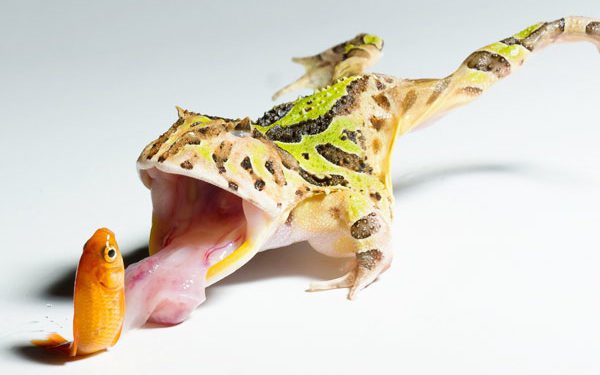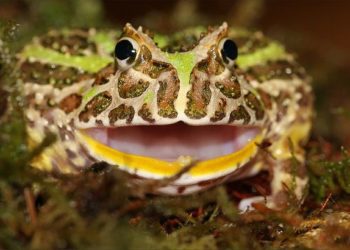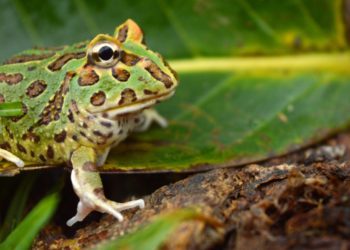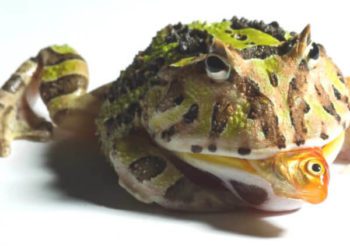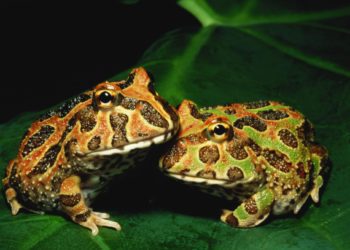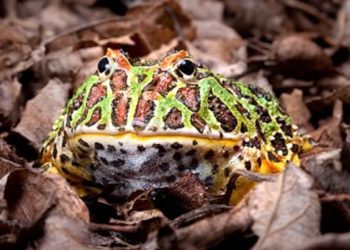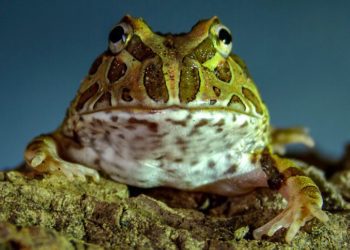Pacman frogs are cute, little, adorable pets, and you can have one if you wish to keep an adorable pet at home without much hassle. Pacman frogs can be brought as babies. But taking care of the baby needs proper knowledge, and that is how you will be able to raise a lively and happy matured Pacman frog.
Contents
How much does the baby Pacman frog eat?
You should feed the baby Pacman frog two to three times a week. Feeding is an important part of the growth process of the Pacman frog. But overfeeding may cause digestion problems as well as obesity. So make sure that the food you are giving to the Pacman frog is healthy and helps them in growing.
How important are vitamins and minerals are for Pacman babies?
You must dust the insects that you feed the Pacman baby with vitamin powders. Gut loading is another process of making the Pacman babies having the nutrients. You can add the vitamin and mineral in powder form to the roaches and the crickets so the inner health, as well as the immunity of the baby Pacman frog, is boosted.

How long do the baby Pacman frogs survive without food?
This seems to be a very unnatural situation under which the pet frog can starve. But there can be such situations and the owner must be aware of the fact that the baby Pacman frog can survive without food for a week. So in case of any mishap, you can expect the baby Pacman frog to stay alive and it will have a chance to be rejuvenated.
In the case of some healthy Pacman frogs, staying without food for a month is also possible, though weight loss and other ill effects of starvation will be seen in their physique.
Why the baby Pacman frog stays skinny?
The diet can be the prior reason for the baby Pacman frog not looking healthy. This insectivorous pet needs the proper amount of food to stay healthy and if it is not eating in proper portions then it will become skinny, as the body fat will be melted to provide its necessary energy.
You should offer a variety of insects like crickets, wax worms, silkworms, or mealworms. Always maintain the portion size which is important to keep the health condition.
At which time should you feed the baby Pacman?
This may seem odd to the first-time owners of the Pacman frogs, but the night is the time of feeding for the Pacman frogs. This amphibian creature is nocturnal and they stay active during the night. The food, that is, the worms is better served alive as they love to hunt for their food.
Why the baby Pacman frog stops eating or eats less?
Pacman frogs are ferocious eaters, which means, they eat whenever they are served food. So if your baby Pacman frog is not eating properly, you must try to find the reason as this can lead to many severe illnesses.
Monotonous diet
Pacman frogs love to eat a variety of food. For them, the different kinds of worms are suitable and not a single type of food or worm is preferred. So if you offer it only a single kind of worm, then it may refuse to eat or leave uneaten food.
Inadequate temperature and humidity
If the shelter of the baby Pacman frog is not having the right atmosphere, that is, the proper amount of heat, humidity, and light, then it can affect the health of the pet. Also, it will disturb their digestion process and as a result, their hunger will diminish. So you should know the adequate temperature for the Pacman frog terrarium is 75 to 85 degrees Fahrenheit in the daytime and at nighttime, it should be around 65 degrees.
Keep the humidity between 50 to 80 percent, and the UVB light should be there to provide them the necessary rays.
A smaller or bigger tank
For the baby Pacman frog, the size should be 5 gallons. If you are offering them a smaller tank, then it may cause them discomfort, which is another cause of a decrease in hunger.
If the tank is too big, like the regular 10 or 20 gallons one, then it will be a massive place for the baby Pacman frog. It may go under anxiety as the vastness of the space will be disturbing for it. So if you have bought a large tank keeping in mind that you have to change the tank soon enough when the frog will grow, then use a divider. This is a smart way to change the size of the tank as and when necessary.
Also, there is a slight difference in the tank size for male and female Pacman frogs. Male ones can sufficiently live in a 10-gallon tank but for the female ones, you need a 20-gallon tank. Female Pacman frogs get bigger in size than their male counterparts, so if you are adopting a baby Pacman frog, know its gender and arrange for the right sized tank.
Difficult substrate
Providing substrate is a great idea for the baby Pacman frogs. If you plan not to provide the substrate and manage the shelter of the Pacman by offering a paper towel, then be aware that the frog can get harmed by falling over the hard surface. Frogs love to jump and thus, the baby Pacman can jump on the bare floor which can cause some injury.
The substrate quality for the tank of the baby Pacman should have all the below-mentioned qualities.
It should be moist enough to allow the baby Pacman to breathe. The frogs breathe through their skin and for that they need to stay within a hydrated atmosphere. They also sometimes dig into the substrate and go inside the burrow. Then the moist substrate will offer them a proper airing.
Do not use some dust-like substrate as that can cause impaction. This is a grave cause for hunger loss. Also, impaction is a serious problem that can also be lethal. So make sure that the substrate is something like coco fiber which will not be devoured by the baby Pacman.
Change of place
Newly brought baby Pacman may refuse to eat for a few days, as the new atmosphere may make it tensed and anxious. Within two days it will be adjusted to its new habitat and start eating regularly.
Sometimes it can be that the frog is not used to the feeding process. If you have tried feeding with hand and the frog has not eaten, then use a tong to offer the food. Also, live insects will be better than dead ones.
Sickness
This is a serious issue when the baby Pacman frog is facing some kind of ailment. Frogs fall sick rarely, and that is one of the causes of their popularity as pets. But even the healthiest creature can fall sick. So if you have tried different kinds of worms, checked the temperature and humidity level of the enclosure, and provided with the right kind of substrate and still the baby is refusing to eat, then you should check the creature with a harp vet.
There can be issues with the parasites which often infest any body part of the frogs and other pets. Also, there can be several kinds of fungal infections that may cause pain and thus the frog may refuse to eat. Get it checked that makes sure that the regular eating habit resumes, keeping the baby frog healthy and growing.
More:


